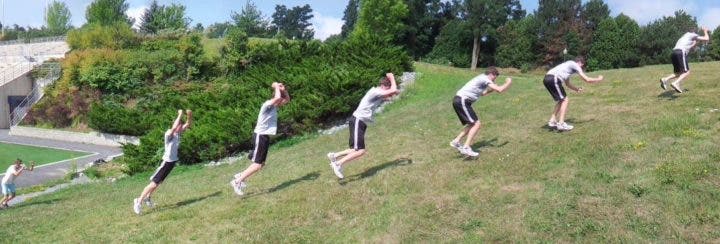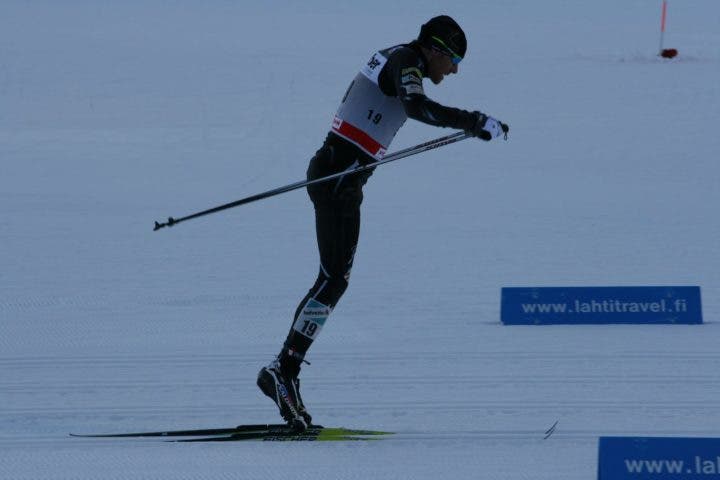We are trying to really simplify the concept of what is the technique in double cane or simultaneous push of arms . There is a lot of confusion right now regarding this technique, as fans and athletes try to overcomplicate it.
However, this technique can be greatly simplified, simply with a few basic principles. It is probably the technique that has changed the most in the last ten years. Upper body strength and double pole efficiency have really changed in cross country skiing.
Now there are careers in classical technique where people decide to use the simultaneous push of the arms (double baton) and put aside the use of retention waxes. The average athlete is now taller and physically larger with much more muscle mass in the shoulders than before.
All these modifications have really changed this technique to the point of saying that the classic technique is now slightly different.
Tech Tips for the Double Pole Technique
1. The starting position

Always repeat and memorize the same starting position . A correct starting position should be with the hands high, being able to visualize the hands when we perform this technique is correct and facilitates the correct position of the body . The athlete should feel the weight on the balls of the feet and that the shoulders are forward.
Normally it is always thought that we carry the weight of the body forward but the important thing is to bring the hips forward . If the weight of the body is on the tips of the feet and the shoulders forward by default we will have the poles in the correct position to start the impulse.
This is one of the great principles, always try to return to the starting position. Whether you are doing a sprint, a long distance race, or a training in classical technique always try to go back to the beginning, since it is usually very common not to do it when tiredness arrives.
If we are in sprint mode , where we need to have a high frequency of movement, then we have to finish the impulse a little shorter in order to maintain the high frequency.
If we are in a long section of descent or what is said flat with a slight descent , where we will have a high speed, the impulse could be much longer, since we have time so that the shoulders can reach the starting point and return to the starting position.
2. The correct push of the legs

When we talk about the simultaneous impulse of the arms or double cane, it is understood that only the arms are worked. But here lies a great mistake, the impulse of the arms is a consequence of the impulse generated by the legs .
The double baton movement is something that lends itself to being very mechanical. But it should not be a rigid movement, quite the opposite. It has to be rigid but also loose and flowing, a factor that must be repeated in all cross-country skiing techniques.
For this fluidity to exist we must understand the mechanics of this technique and work hard on it. The legs here play a fundamental role in transmitting our body weight and that this load is transformed into strength and at the same time it becomes momentum.
It is quite simple, we must transmit all our body weight to the poles and, to achieve this, we must understand that we will only achieve it if we achieve a good leg push and that our hips and shoulders are forward.
